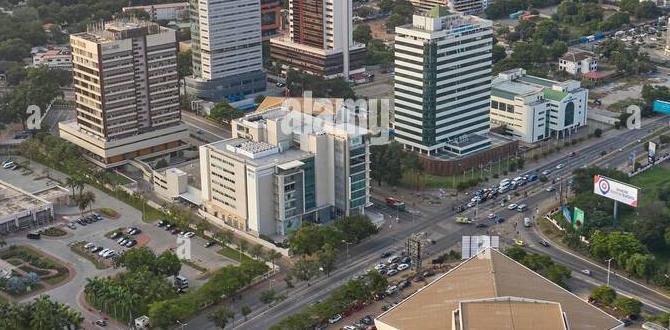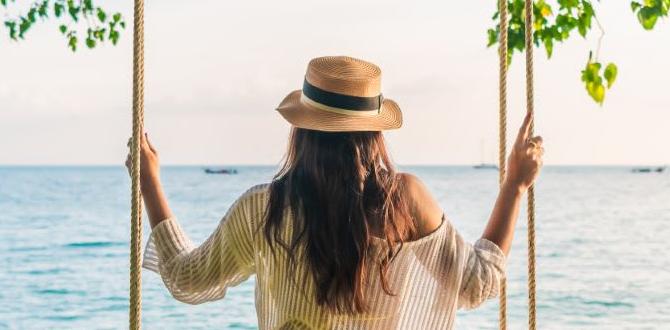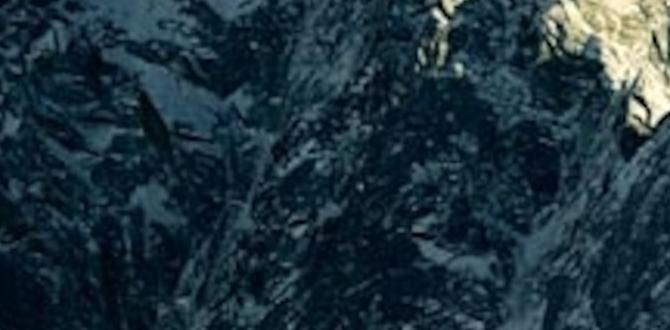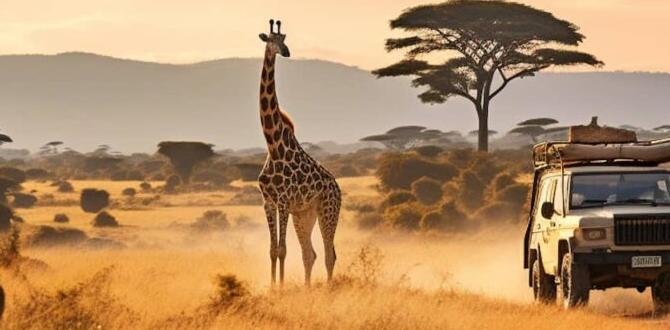Planning a family trip to the Atacama Desert? This guide offers essential tips for a comfortable, safe, and unforgettable adventure with kids. From packing essentials to kid-approved activities, discover how to navigate this unique landscape with ease, ensuring smiles all around.
The Atacama Desert, with its otherworldly landscapes, starry nights, and unparalleled natural beauty, is an incredible destination for families. However, traveling with children to such an extreme environment can feel daunting. You might be wondering how to keep everyone comfortable, safe, and entertained in arid conditions and at high altitudes. Don’t worry! This guide is here to help. We’ll walk you through everything you need to know to make your Atacama family adventure smooth and memorable, focusing on practical solutions that bring peace of mind. Get ready to explore the driest desert on Earth with confidence!
Atacama Desert Family Adventure: Your Ultimate Guide
Embarking on a family journey to the Atacama Desert is selecting an extraordinary destination. This region, known as the driest non-polar desert on Earth, offers a dramatic canvas of salt flats, geysers, volcanoes, and some of the clearest night skies imaginable. For families, it presents a unique opportunity to spark curiosity and create lasting memories. Navigating this alien terrain with children requires a bit of planning, but the rewards – a sense of wonder and a shared adventure – are immense. This guide is designed to provide you with practical, easy-to-follow advice to ensure your family trip is as comfortable and enjoyable as possible. We’ll cover everything from essential packing lists to engaging activities suitable for various ages, ensuring that even the youngest travelers have an incredible experience.
Why the Atacama is Perfect for an Adventurous Family
The Atacama Desert might sound extreme, but its unique ecosystem and geological wonders offer a captivating learning experience for children. Imagine witnessing geysers erupting at dawn, exploring lunar-like valleys, or stargazing in a place where the universe feels incredibly close. These are experiences that can ignite a lifelong love for nature and science in your kids. Unlike typical beach holidays, the Atacama offers a journey into the raw, untamed beauty of our planet, fostering a deeper appreciation for diverse environments.
When to Visit the Atacama with Kids
Timing is crucial for a comfortable family trip to the Atacama. The desert experiences significant temperature fluctuations between day and night, and the sun can be intense.
Shoulder Seasons (March-May and September-November): These months generally offer the most pleasant weather. Daytime temperatures are warm but not excessively hot, and nighttime temperatures are cooler but typically manageable. This is often the best time for families looking for a balance of comfortable exploration and manageable weather extremes.
High Season (December-February): This is summer in the Atacama. Days can be very hot, with temperatures often exceeding 35°C (95°F), especially in lower-lying areas like San Pedro de Atacama. While nights are milder, the midday sun can be challenging for young children.
Low Season (June-August): This is winter. Daytime temperatures are cool, often pleasant for outdoor activities, but nights can drop significantly below freezing, sometimes reaching -10°C (14°F) or even lower. This requires much warmer clothing and careful planning for evening excursions.
For families with young children, the shoulder seasons are highly recommended to avoid extreme heat or cold, making activities more enjoyable and reducing the risk of heatstroke or excessive chilling.
Getting to the Atacama Desert with Family
The most common gateway to the Atacama is Calama Airport (CJC). From there, you’ll typically take a pre-booked shuttle or arrange a private transfer to San Pedro de Atacama, the main tourist hub.
Flights: Several airlines offer flights to Calama, often connecting through Santiago (SCL), Chile’s capital. Book flights in advance, especially if traveling during peak tourist times.
Transfers: Once you land in Calama, transfers to San Pedro de Atacama take about 1.5 to 2 hours. Companies like TransVIP and Licancabur are popular options. Booking a private transfer can be more convenient for families with luggage and young children, offering flexibility and direct service.
Tip: If you have infants or toddlers, consider bringing an Ergobaby carrier or a similar soft-structured carrier. It can be invaluable for navigating rough terrains and keeping little ones close and secure, especially on tours where strollers aren’t practical.
Navigating the Atacama: Essential Packing for the Whole Family
Packing for the Atacama requires a layered approach due to the dramatic temperature shifts and the intense desert sun. Comfort and protection are key, especially for children.
Clothing Essentials for Adults and Children
Layers are Key: This is the golden rule. Pack lightweight, breathable long-sleeved shirts and pants to protect against the sun and cooler evenings.
Warm Layers: Include fleece jackets, sweaters, or down vests for mornings and evenings when temperatures plummet.
Outerwear: A waterproof and windproof jacket is essential, especially for excursions like the Tatio Geysers where it can be very cold and windy.
Bottoms: Comfortable hiking pants or sturdy leggings are ideal. Jeans can be too restrictive and hot for daytime activities.
T-shirts and Tops: Pack a good number of t-shirts and light tops for layering.
Sleepwear: Pack warm pajamas, as nights can be chilly.
Footwear for Desert Exploration
Comfortable Walking Shoes: Closed-toe shoes with good grip are a must for exploring varied terrains. Sneakers or light hiking boots work well.
Sandals or Flip-flops: Useful for relaxing at accommodation or short walks.
Warm Socks: Wool or thermal socks are excellent for cold mornings and evenings.
Sun Protection – Non-Negotiable!
The Atacama sun is intense due to the high altitude and lack of cloud cover. Sun protection is paramount for all family members.
High SPF Sunscreen: Pack broad-spectrum sunscreen with an SPF of 50 or higher. Reapply frequently, especially after swimming or sweating.
Wide-Brimmed Hats: Hats that shade the face, neck, and ears are crucial. Baseball caps offer some protection but aren’t ideal for the entire face.
Sunglasses: Protect your children’s eyes with sunglasses that offer UV protection.
Lip Balm with SPF: Lips can easily get chapped and sunburned in the desert.
Hydration and Health Essentials
Reusable Water Bottles: Staying hydrated is critical in the dry desert air. Encourage everyone to drink water consistently.
Moisturizer and Lip Balm: The dry air can wreak havoc on skin. Pack good quality moisturizers and lip balms.
Basic First-Aid Kit: Include bandages, antiseptic wipes, pain relievers (appropriate for children and adults), motion sickness medication (if needed for windy roads), and any personal prescriptions.
For Diaper Needs: For families traveling with infants or toddlers requiring diapers, pack generously. While some larger towns might have limited options, it’s best to bring your preferred brands and sizes. Investing in high-absorbency, comfortable options like Depend adult diapers or equivalent child-friendly brands can prevent leaks and discomfort, especially during long excursions or overnight. Ensuring children are dry and comfortable reduces fussiness and allows everyone to focus on the adventure. Pack a sufficient supply of both daytime and overnight diapers, along with disposable bags for easy cleanup.
Miscellaneous but Important Items
Backpack: A daypack is essential for carrying water, snacks, sunscreen, camera, and extra layers during excursions.
Camera and Extra Batteries/Chargers: You’ll want to capture the stunning scenery.
Small Snacks: Pack non-perishable snacks like nuts, dried fruit, granola bars, and crackers for quick energy boosts.
Hand Sanitizer: For keeping hands clean on the go.
Insect Repellent: While the Atacama is very dry, some insects can be present, especially near water sources.
Small Towel: A quick-drying travel towel can be surprisingly useful.
Kid-Friendly Activities in the Atacama Desert
While the Atacama is known for its dramatic landscapes, there are plenty of ways to engage children and make the experience fun for them.
1. Valle de la Luna (Moon Valley) and Valle de Marte (Mars Valley)
Why it’s Great for Kids: These valleys offer incredibly surreal landscapes that look like another planet. The unique rock formations, salt crusts, and sand dunes are fascinating for children to explore.
Tips for Families:
Timing: Visit late afternoon to enjoy the cooler temperatures and witness a breathtaking sunset.
Scramble Safely: Let kids climb on some of the gentler rock formations under close supervision.
Sandboarding: Many tours offer sandboarding in the dunes. Ensure your children are old enough and comfortable with the activity. Safety instructions are vital. The sand is soft, but always be prepared.
2. El Tatio Geysers
Why it’s Great for Kids: Witnessing steam plumes erupting from the earth is a magical experience for kids of all ages.
Tips for Families:
Early Start: Tours depart very early (around 4-5 AM) to see the geysers at their most active. Be prepared for very cold temperatures.
Dress Warmly: This is where your warmest layers, hats, and gloves come in.
Hot Springs: Some tours offer a chance to bathe in natural hot springs. It’s a unique experience, but ensure children are supervised and don’t stay in too long due to the heat and altitude. The minimum age for bathing can vary by tour operator.
Altitude Awareness: El Tatio is at over 4,300 meters (14,000 feet). Acclimatize before visiting such high altitudes, especially with children. Avoid strenuous activity on the days leading up to this tour.
3. Stargazing Tours
Why it’s Great for Kids: The Atacama boasts some of the clearest skies on Earth, making it a prime location for stargazing. Seeing the Milky Way in such clarity is an unforgettable experience for children.
Tips for Families:
Choose Family-Focused Tours: Some tour operators specifically design tours with children in mind, making the explanations simpler and more engaging.
Warm Clothing: Again, nights are cold, so bundle up!
Explain beforehand: Talk to your children about the stars and planets before the tour to build excitement.
4. Lagunas Altiplánicas (Highland Lagoons)
Why it’s Great for Kids: The vibrant blue waters of the lagoons, set against a backdrop of volcanoes and visited by flamingos, are visually stunning.
Tips for Families:
Altitude: These lagoons are at high altitudes (over 4,000 meters). Take it easy.
Wildlife Spotting: Encourage kids to look for flamingos and other desert wildlife.
Bring Binoculars: If you have them, children love using binoculars to spot animals from a distance.
5. Pukará de Quitor
Why it’s Great for Kids: This pre-Inca fortress offers a glimpse into ancient history. Kids can imagine life within the ancient walls.
Tips for Families:
Short Excursion: It’s a relatively short visit, perfect for shorter attention spans.
Views: The climb offers panoramic views of the San Pedro de Atacama oasis.
Important Considerations for Families in the Atacama
Traveling with children, especially in a unique environment like the Atacama, necessitates extra attention to safety and well-being.
Altitude Sickness (Soroche)
San Pedro de Atacama is at an elevation of about 2,400 meters (7,900 feet). Many popular attractions, like El Tatio Geysers and the Altiplanic Lagoons, are at significantly higher altitudes (4,000–4,500 meters / 13,000–14,800 feet).
sintomas: Symptoms can include headache, nausea, dizziness, and shortness of breath.
Prevention:
Acclimatize: Spend your first day in San Pedro de Atacama resting and exploring the town. Avoid strenuous activities or long excursions on your first day.
Stay Hydrated: Drink plenty of water.
Avoid Alcohol and Heavy Meals: These can exacerbate altitude sickness.
Eat Lightly: Fruits and vegetables are good choices.
Coca Leaves/Tea: In some regions, coca tea is available and can help alleviate symptoms.
Consult Your Doctor: Discuss altitude sickness prevention with your pediatrician and family doctor before your trip. They may recommend specific medications like Diamox.
Hydration is Crucial
The desert air is incredibly dry, and it’s easy to become dehydrated without realizing it.
Constant Sipping: Encourage everyone, especially children, to drink water continuously throughout the day. Don’t wait until you feel thirsty.
Carry Water Everywhere: Always have water bottles accessible, whether you’re on a tour or exploring town.
Electrolytes: Consider electrolyte drinks or powders to help replenish salts lost, particularly during hot days or strenuous activities.
Food and Dining with Kids
San Pedro de Atacama has a good range of restaurants, many of which are accommodating to families.
Familiar Options: You’ll find pasta, chicken, and rice dishes that are usually kid-friendly.
Local Flavors: Introduce kids to local fruits like tuna (prickly pear) if they’re adventurous eaters.
Snacks: Always have snacks on hand for fussy eaters between meals or during long tours.
Tour Operators and Child Safety
When booking tours, consider companies that have experience with families.
Check Age Recommendations: Some tours, especially those at high altitudes or involving adventure activities, may have minimum age requirements.
Safety Briefings: Ensure the tour operator provides clear safety instructions and that your children understand them.
Child Car Seats: If you arrange private transfers or tours, inquire about child car seats if needed.
Diving into the Desert: What to Expect
The Atacama is not just sand. It’s a diverse environment with unique geological formations and wildlife.
Extreme Temperatures: Be prepared for significant temperature drops after sunset. The difference between daytime highs and nighttime lows can be 20°C (36°F) or more.
Dust and Sand: The desert is dusty. Keep eyes and noses clear. A bandana or a light scarf covering the nose and mouth can be useful during windy conditions or dusty trails.
Wildlife: While the desert is harsh, you can spot vicuñas, llamas, chinchillas, and various bird species, including flamingos in the high-altitude lagoons.
Table: Sample 3-Day Family Itinerary for San Pedro de Atacama
This is a sample itinerary and can be adjusted based on your children’s ages and stamina. Prioritize acclimatization on Day 1.
| Day | Morning Activity | Afternoon Activity | Evening Activity | Notes |
| :– | :————— | :—————– | :————— | :—- |
| 1 | Arrive in Calama, transfer to San Pedro de Atacama, check-in. | Relax and explore San Pedro town. Visit the local market. | Early dinner, rest. | Focus on acclimatization. Drink plenty of water. |
| 2 | Valle de la Luna (Moon Valley) tour. | Valle de Marte (Mars Valley) sunset. | Dinner. | Pack layers, water, and snacks. Suitable for most ages. |
| 3 | El Tatio Geysers tour (very early start). | Return to San Pedro, rest. Optional: Pukará de Quitor visit (short). | Stargazing tour. | Crucial: Dress in warmest clothes possible for geysers. Altitude is very high. |
Travel Gear That Makes a Difference
Beyond clothing, a few specific items can significantly enhance your family’s comfort and convenience in the Atacama.
Portable Phone Charger/Power Bank: Essential for keeping phones and cameras charged, especially on full-day tours.
Zippered Pockets and Bags: To protect electronics and valuables from dust.
Reusable Snack Bags: For easy packing and portioning of snacks.
Comfortable Pillow for Transfers: Long bus rides or flights to Calama can be made easier with a travel pillow.
Baby Wipes: Multipurpose for cleaning hands, faces, and even as a quick refresh on a dusty day.
When thinking about travel comfort, especially for younger children or those with specific needs, consider comprehensive solutions for personal care. Items like adult diapers, which offer discreet and reliable protection, can be a lifesaver for long journeys or unexpected situations, ensuring that travel is less stressful for both the individual and caregivers. Many modern options are designed for comfort and absorbency, so trips are never compromised.
FAQ: Your Atacama Family Questions Answered
Q1: Is the Atacama Desert safe for young children?
A1: Yes, the Atacama is generally safe for families when proper precautions are taken. Key concerns are the intense sun, high altitudes, and dry climate. By packing appropriately, staying hydrated, and being mindful of altitude sickness, families can have a wonderful and safe experience.
Q2: What is the best way to deal with the dry climate for children’s skin and eyes?**
A2: Pack moisturizing lotions, lip balms with SPF, and saline nasal






